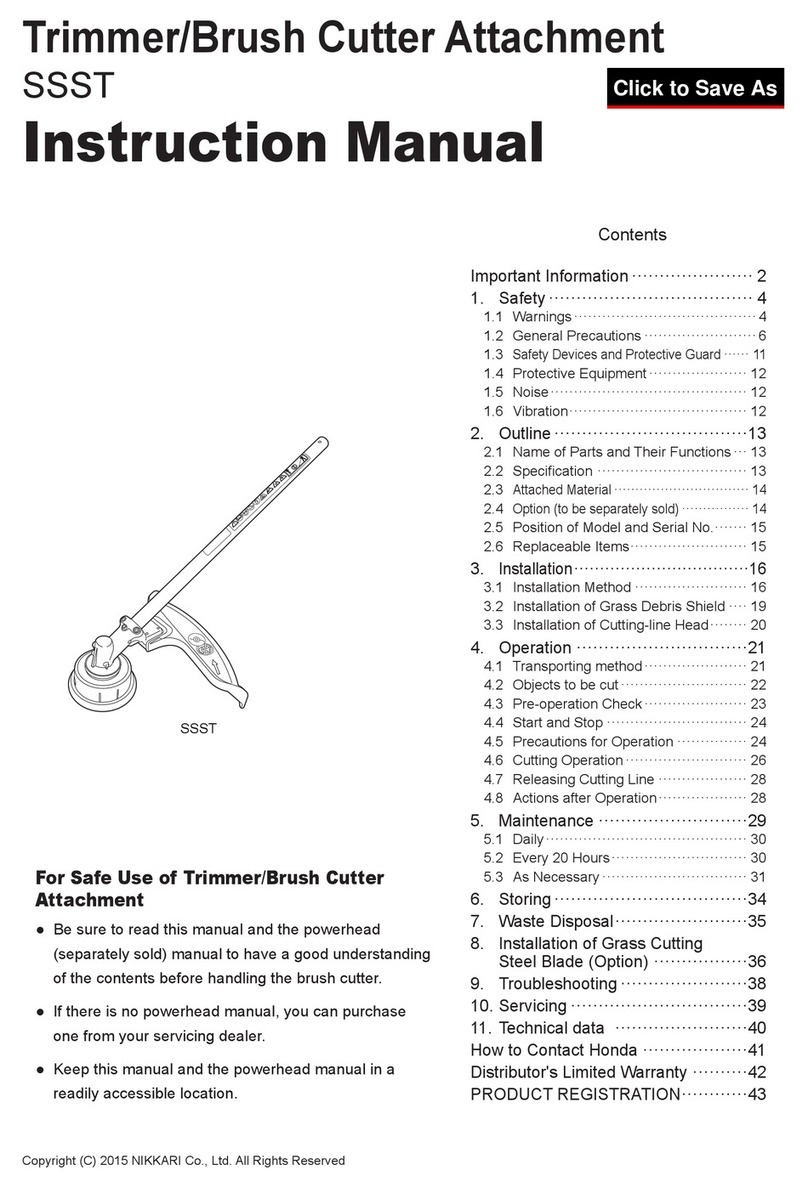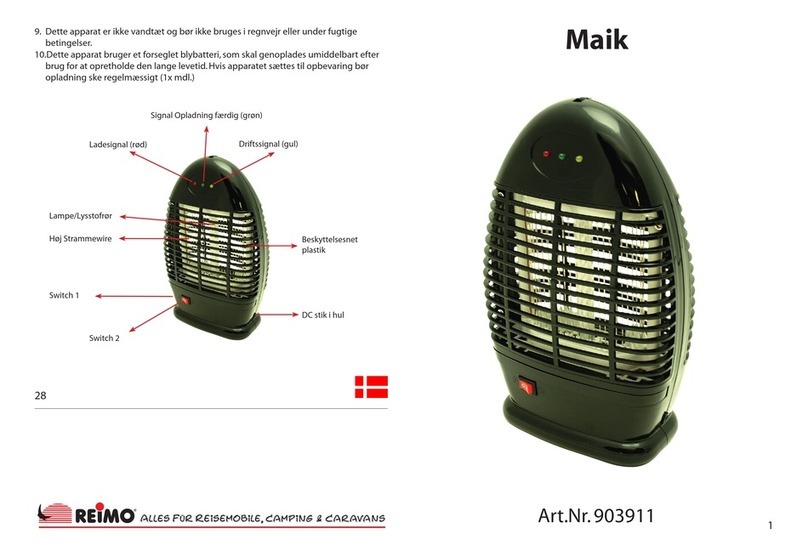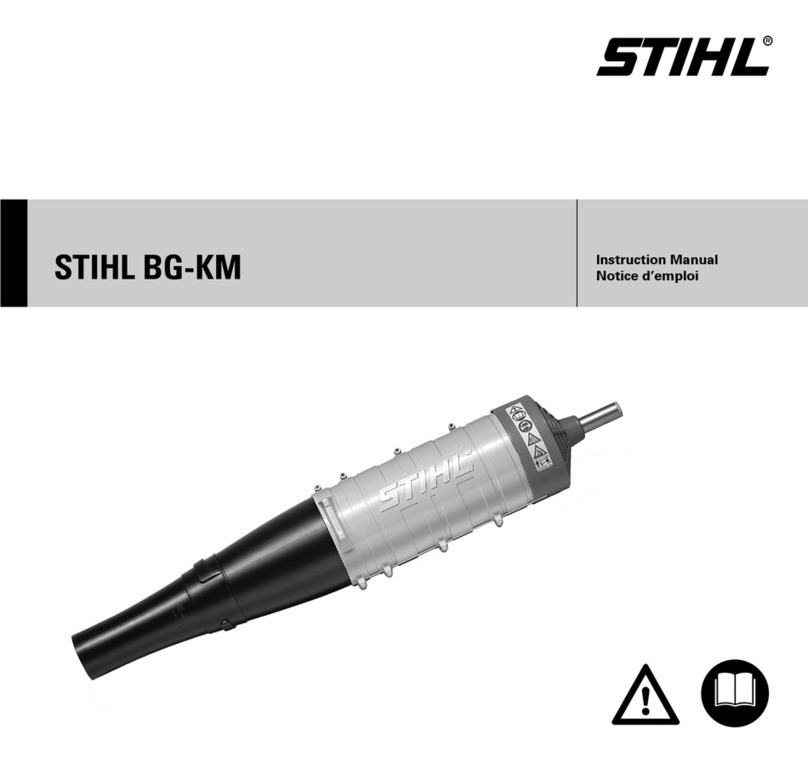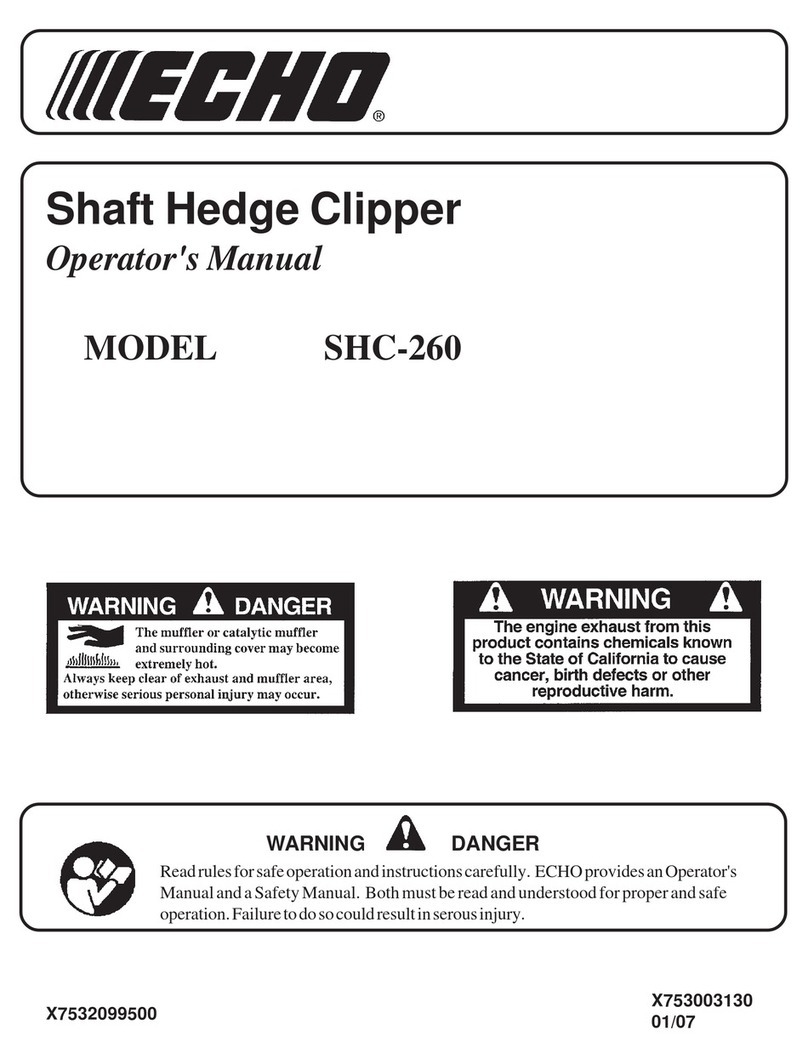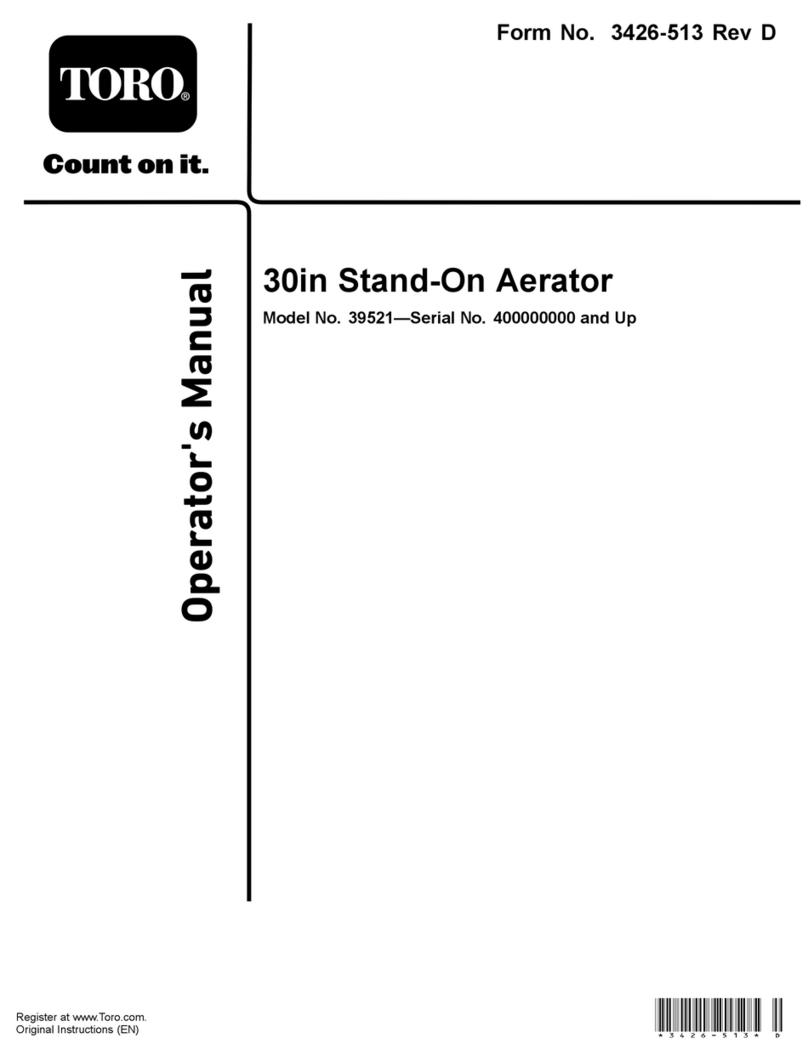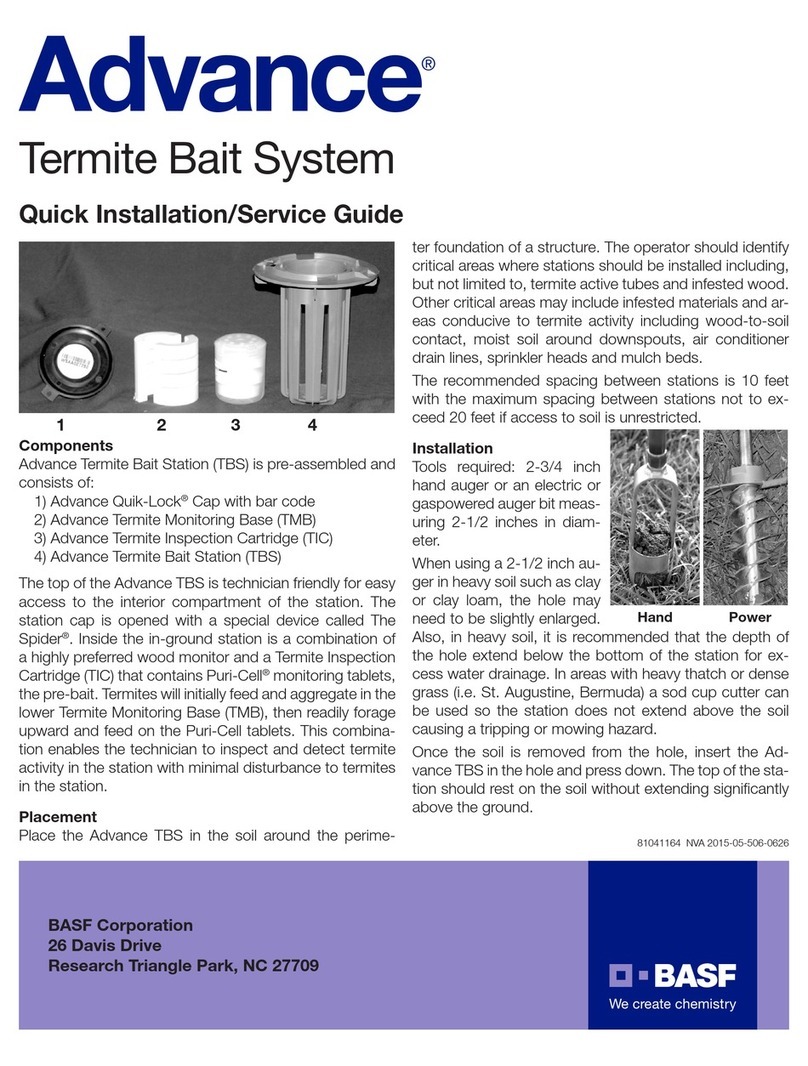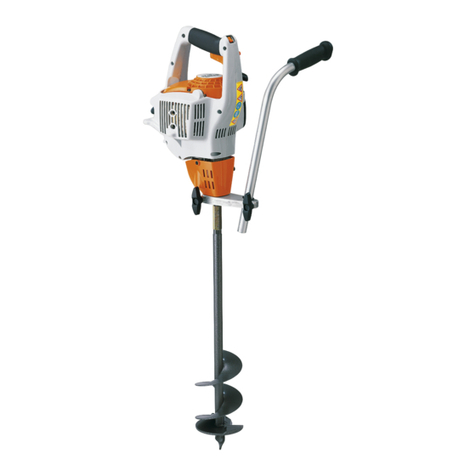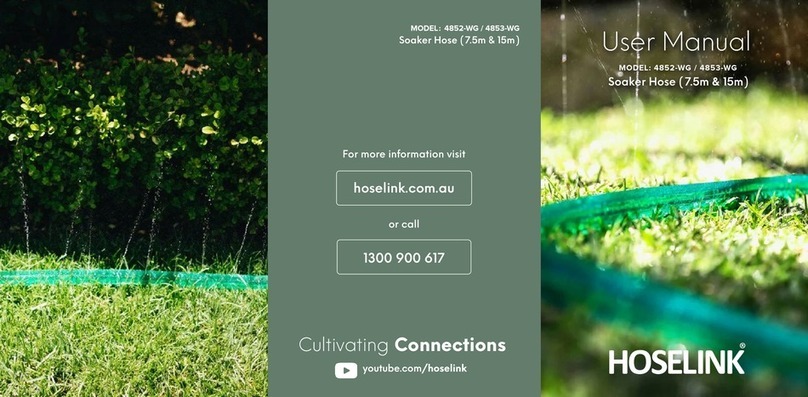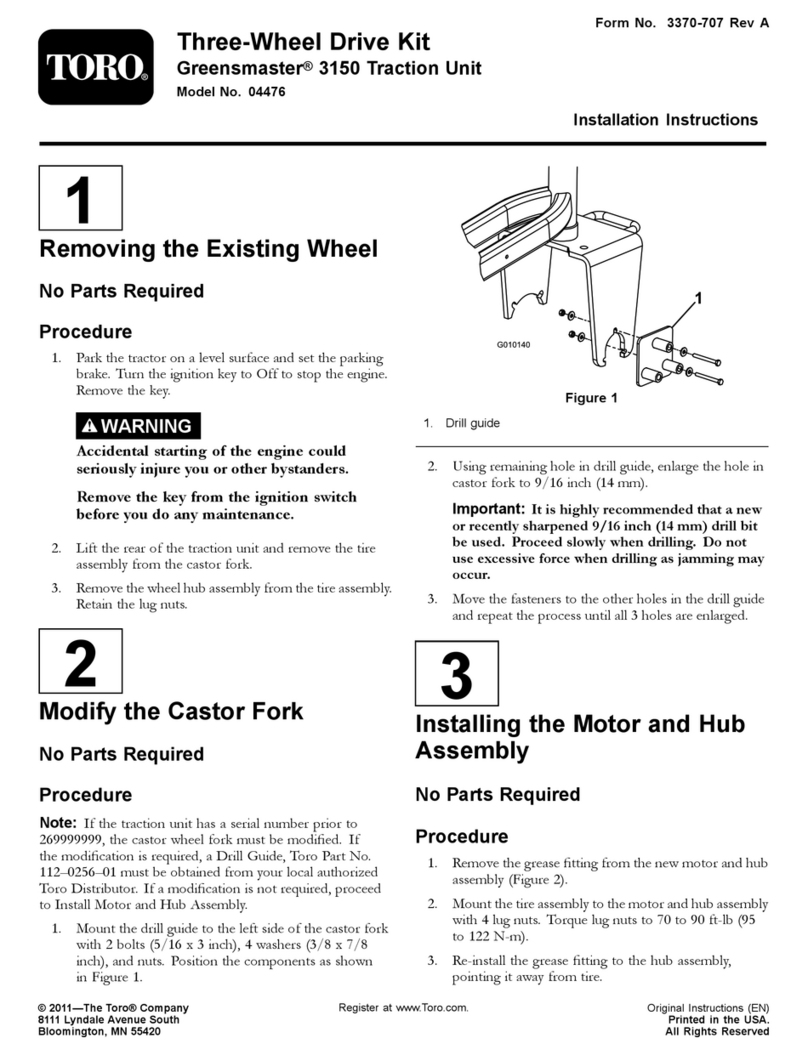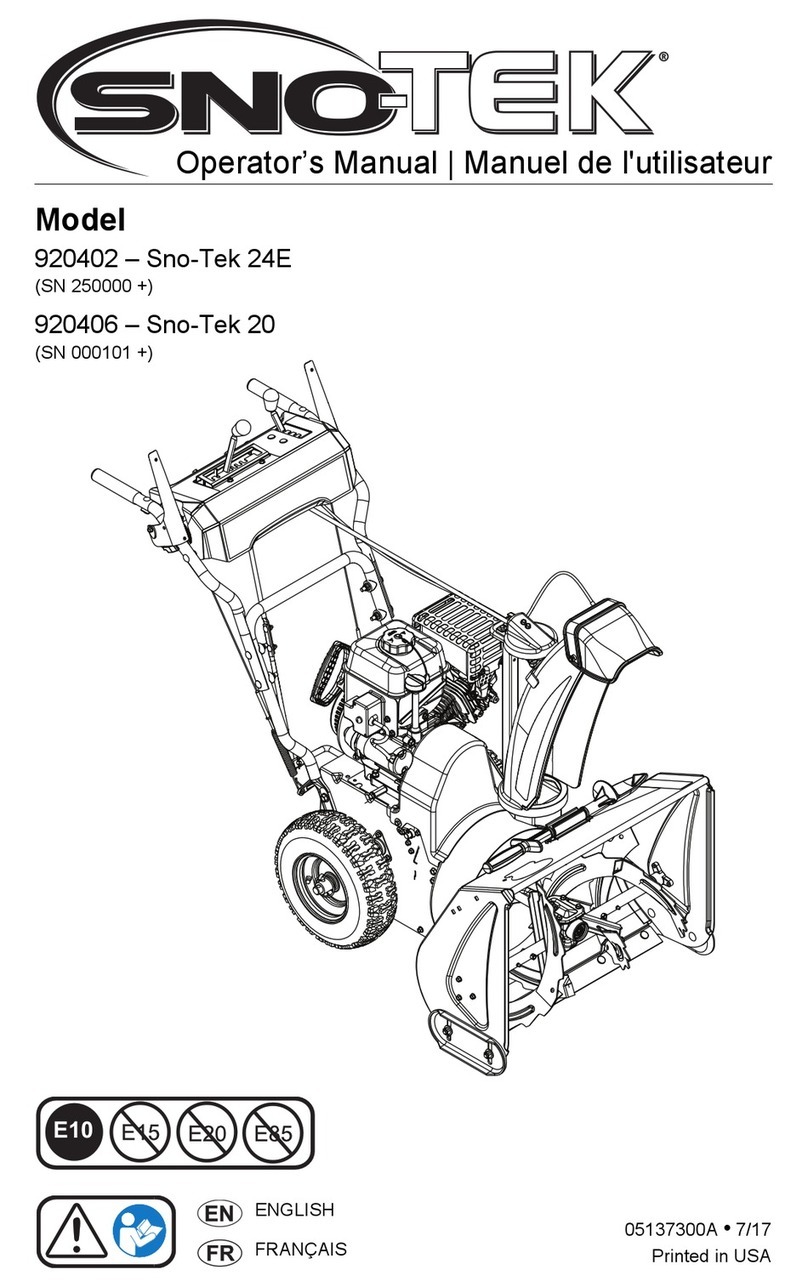NIKKARI SSPP User manual

Contents
Important Information ······················ 2
1. Safety ····································· 4
1.1 Warnings ······································· 4
1.2 General Precautions ························ 6
1.3
Safety Devices and Protective Guard ······ 12
1.4 Protective Equipment ····················· 13
1.5 Noise·········································· 13
1.6 Vibration······································ 13
2. Outline ···································14
2.1 Name of Parts and Their Functions ··· 14
2.2 Specication ································ 15
2.3
Attached Material ································ 15
2.4 Position of Model and Serial No.······· 16
2.5 Replaceable Items························· 16
3.
Installation····································17
3.1
Installation and Removal of Saw Chain/Guide Bar ····17
3.2 Installation Method ························ 20
4. Operation ·······························22
4.1 Transporting Method ······················ 22
4.2 Pre-operation Check ······················ 23
4.3 Start and Stop ······························ 24
4.4 Precautions for Operation ··············· 24
4.5 Pruning Operation ························· 26
4.6 Actions after Operation··················· 27
5. Maintenance ···························28
5.1
Before/During Operation or When Refueling ·· 29
5.2 Before Operation··························· 33
5.3 After Operation ····························· 34
5.4 Every 20 hours ····························· 35
5.5 As Necessary ······························· 35
6. Storing ···································36
7. Waste Disposal························37
8. Troubleshooting ·······················38
9. Servicing ································39
10. Technical data ························40
How to Contact Honda ···················41
Distributor's Limited Warranty ··········42
PRODUCT REGISTRATION············43
Copyright (C) 2015 NIKKARI Co., Ltd. All Rights Reserved
For Safe Use of Pole Pruner Attachment
●Be sure to read this manual and the powerhead
(separately sold) manual to have a good understanding
of the contents before handling the pole pruner.
●If there is no powerhead manual, you can purchase
one from your servicing dealer.
●Keep this manual and the powerhead manual in a
readily accessible location.
Pole Pruner
Attachment
SSPP
Instruction Manual
SSPP

2
Important Information
Intended Purpose
This product (hereinafter referred to as an attachment) is designed to be attached to an approved
powerhead (to be purchased separately) for cutting or pruning trees or branches. (Refer to page 20 for
approved powerheads.)
Do not use the pole pruner for any other purpose or in any other way.
Pole pruner
Powerhead (Separately sold)
Attachment
Attachment (This product)
General
●When handling the pole pruner, observe all the applicable safety rules, standards or regulations in the
area where the pole pruner is used.
This pole pruner is designed and produced according to the standards and regulations applied in the
purchase country, assuming that the use is limited to the purchase country only.
It will not comply with standards and regulations of other countries.
Do not export or resell the pole pruner to any other countries because the languages are different.
●Before use, read this instruction manual and powerhead manual thoroughly, and have a good
understanding of the contents.
Do not allow any person who does not understand the contents of this manual to handle this pole
pruner.
●Do not take any actions other than those described in this manual and powerhead manual.

3
Important Cautions for Safe Work
●NIKKARI Co., Ltd. (hereinafter referred to as NIKKARI) cannot foresee all the risks in handling the pole
pruner. Therefore, also give consideration to general safety measures not stated in this manual and
powerhead manual to prevent injuries when handling the pole pruner.
●The pole pruner is a very high speed cutting tool. To decrease risk of personal injury, special safety
precautions must be observed. If it is used carelessly or inappropriately, hands or body could make
contact with the saw chain, resulting in a fatal or serious injury.
Important Cautions for Instruction Manual
●This instruction manual is copyrighted and all rights are reserved. This instruction manual, in whole or
part, may not be copied, translated or reproduced to any electronic medium or machine readable without
prior written consent from NIKKARI.
●The contents described in this instruction manual and powerhead manual are subject to change without
prior notice.
● Illustrationsorguresshowninthisinstructionmanualmaypartiallydifferfromyourpolepruner.
●If you lend or rent the pole pruner, be sure to provide the user with this manual and the powerhead
instruction manual. Also, advise the user that they need to have a good understanding of the content of
both manuals before starting any work.
●If this instruction manual or powerhead manual is lost or damaged, order a replacement from your
servicing dealer immediately.
●If you have any questions about descriptions in this manual or powerhead manual, contact your
servicing dealer.
●The names of companies and products described in this manual are generally trademarks or registered
trademarks of each company.

4
1. Safety
California Proposition 65
This product contains or emits chemicals known to the State of California to cause cancer, birth defects, or
other reproductive harm.
1.1 Warnings
For appropriate use of the pole pruner, follow the instructions in this manual. Warning labels are attached
to places where there are potential risks or in the periphery. The warnings in this instruction manual and
the warning labels are categorized depending on the degree of risk as shown in the table below.
1.1.1 Warning Description
Signal words in this instruction manual are categorized as shown below. If the warning for each signal
word is ignored, injury or death may result.
Meanings of signal words
DANGER
Indicates an immediately hazardous situation which, if not avoided, will
result in death or serious injury.
WARNING
Indicates a potentially hazardous situation which, if not avoided, could result
in death or serious injury.
CAUTION
Indicates a potentially hazardous situation which, if not avoided, could result
in mild to moderate injury.
Note It could result in property damage.
Indicates to emphasize important information or provide helpful information.
Meanings of symbols
Caution
Sign
Indicates that hazardous situation may result if you fail to follow the
instructions. The hazards are indicated by the pictogram inside the
symbol.
Prohibition
Sign
Indicates prohibition of dangerous action. Prohibited actions are
indicated by the pictogram inside or by the symbol.
Enforcement
Sign
Indicates enforcement of actions. Actions to be enforced are
indicated by the pictogram inside the symbol. This action is required
to avoid hazard.

5
1.1.2 Warning Labels
Cautions for Handling
(a) This pole pruner is provided with warning labels to indicate important cautions. Understand the
meanings of the warning labels thoroughly to work in a safe environment.
(b) Do not operate the pole pruner until you have a good understanding of the meanings of the
warning labels. If you do not understand the meanings, contact your servicing dealer.
(c) Be sure to observe the warning labels and warning messages in the instruction manual at all
times while handling the pole pruner.
(d) Do not remove or damage the warning labels. Also, do not clean the warning labels with
solvent.
(e) Do not paint the warning labels when repainting the pole pruner.
(f) If the warning labels become illegible, damaged or removed, purchase new ones from your
servicing dealer, and attach them in accordance with the “Warning Labels and Attached
Locations”.
Warning Labels and Attached Locations
1 32 4 5 6
1 Be sure to read the instruction manual and completely understand it before use.
2 Wear personal protective equipment for eyes, ears, and head during operation.
3 Wear protective shoes (sturdy boots with nonslip sole) during operation.
4 Wear gloves during operation.
5Exhaust contains carbon monoxide, a clear, odorless gas that can injure or kill you. Only use in
well ventilated locations.
6Keep people and animals out of the area within a radius of 50 ft (15 m) from the pole pruner during
operation. Do not operate within the area 33 ft (10 m) from the electric cable.

6
1.2 General Precautions
1.2.1 Overall Precautions
When handling the pole pruner, follow the precautions of the powerhead manual in addition to the following
precautions.
Do not use the pole pruner for dead branches suspended in tree.
* Otherwise, falling branches could cause unexpected injury.
Do not use the pole pruner when tired, ill, or after consuming alcohol, drugs,
or medication.
Use an approved saw chain.
* If unapproved saw chain is used, it could come off the guide bar, resulting in serious
injury. For any questions, contact your servicing dealer.
Be sure to rmly tighten the knob bolt at the attachment connection before
using the attachment.
* The attachment could come off, resulting in serious injury or death.
Do not allow minors to operate the pole pruner.
Do not modify the pole pruner.
Do not install any unapproved powerhead and extension pipe to the
attachment.
Do not remove the safety devices.
Do not touch the saw chain during operation.
If you lend or rent the pole pruner, be sure to provide the user with this manual
and the powerhead instruction manual. Also, advise the user that he or she
needs to have a good understanding of the content of both manuals before
starting any work.
Wear heavy-duty gloves when handling the saw chain.
* Otherwise,handsorngerscouldbeseveredbythesawchain.
Always shut off the engine and remove the pole pruner from the powerhead
before handling the saw chain.
Note
●Do not allow the saw chain to contact foreign objects such as soil and sand. It could cause premature
wear.

7
1.2.2 Precautions for Clothing
Wear a hard hat when using or transporting the pole pruner.
Wear appropriate personal protective equipment when using the pole pruner.
For details about protective clothing refer to “1.4 Protective Equipment”.
Wear goggles meeting the requirements of ANSI Z87.1 when using the pole
pruner.
Also use a face shield (or face screen) if possible.
* Failuretousegogglesorfaceshield,couldresultineyeinjuryfromyingdebris.
Wear hearing protective equipment such as ear protections when using the
pole pruner.
1.2.3 Precautions before Operation
Do not allow children or animals to enter the working range of the pole pruner
within 50 ft (15 m).
Do not operate the pole pruner near electrical wires.
* Otherwise, you may suffer an electric shock.
Do not use if the saw chain is loosened.
* It could come off the guide bar, resulting in serious injury.
Make sure that the pole pruner is operated normally or there is not any part
missing or damaged before starting the operation.
Before starting the operation or when hitting the pole pruner against something
hard such as stones, make sure that the knob bolt of powerhead connections
is not loosened.
* Otherwise, it could cause the attachment to fall off.
Make sure that the positioning knob is lowered to the locked position when
installing the pole pruner. (Refer to page 21.)
* The attachment could come off.
Before use, always inspect the powerhead and attachment for any loose,
damaged or missing parts.
* Anything loose, damaged, or missing could cause parts of the powerhead attachment to
fall off or fail and seriously injure or kill the user.
Before using pole pruner, inspect the work area for any obstacles that cannot
be removed so you can avoid contacting them when operating the pole pruner.
* Otherwise, you may trip on the obstacle or unintentionally hit it with the saw chain,
potentially resulting in serious injury or death.

8
Note
●If the edge of the saw chain is blunt or damaged, do not operate the pole pruner. Otherwise, it could
cause damage to the engine and machine due to overloading.
1.2.4 Precautions at Start of Operation
The pole pruner must only be started and operated by one person.
* Operation by more than one person increases the likelihood of mishandling and
resulting injury.
Always start the pole pruner in an open, at area with the saw chain off the
ground.
*Otherwise, you risk injury from falling or hitting the saw chain on the ground or
obstacles.
1.2.5 Precautions for Operation
Do not operate the pole pruner on insecure footings including a ladder, tree,
back of the truck.
* You could fall off the footing, drop the pole pruner or contact the saw chain by
inappropriately handling it, resulting in serious injury or death.
Use a vehicle designed for reaching high places.
In case of using a hoist, follow the rules and regulations to be observed, and
use of an appropriate hoisting device.
* Otherwise, you could fall, drop the pole pruner or contact the saw chain by
inappropriately handling it, resulting in injury.
Do not operate the pole pruner using just one hand.
* You could drop the pole pruner or contact the saw chain by mishandling, potentially
leading to serious injury or death.
If the saw chain starts moving while idling, do not use the pole pruner.
Do not use the tip of the guide bar for cutting.
* Otherwise, the pole pruner could kickback, potentially leading to serious injury.

9
Exhaust contains carbon monoxide, a clear, odorless gas that can injure or kill
you. Only use in well ventilated locations.
Always concentrate on your work when using the pole pruner.
Ifyouneedtodootherworkortalktoothers,stoptheenginerst.
* Failure to properly concentrate could result in mishandling and resultant injury.
Always use the harness when operating the pole pruner.
* Failure to use the harness increases the likelihood of mishandling and resultant injury.
When cutting trees above head level, take a break as necessary.
* If you continue operating without taking a break, your arm gets tired and you cannot
hold the pole pruner any more, which could cause you to drop the pole pruner,
resulting in injury.
When pruning or cutting hedges or trees above eye level, frequently check the
hedge or tree for obstacles.
* If the check is neglected, it could cause the pole pruner to contact a person, object, etc.,
resulting in injury.
Do not touch hot surfaces such as the gear case during or immediately after
the operation.
* Failure to observe the instruction could result in burns because the gear case could be
very hot.
Check to see if there is an empty can, wire, small stone, band, etc. and remove
them before starting the operation.
* Otherwise, it could cause injury due to scattered pieces of broken saw chain, etc.
Wear a dust mask when cutting many branches.
Use extreme caution when cutting small-sized brush and saplings.
* Slender material may catch the saw chain and be whipped toward you or force you off
balance.
Note
●During the operation, make sure periodically that the chain oil is being discharged. Otherwise, the saw
chain or guide bar could be damaged, or burn injury could be caused if you touch the guide bar which
has become high in temperature.

10
1.2.6 Precautions for Maintenance
Do not replace parts with inappropriate parts.
* Failure to observe the instruction could cause the product not to perform as intended
and cause injury due to deterioration of safety.
Before performing maintenance, repair or cleaning, stop the engine and remove
the attachment from the powerhead.
* Iftheenginestartsduringthework,handsorngerscouldbeseveredbythemoving
parts or saw chain, resulting in serious injury or death.
Note
●Do not perform any maintenance or repair other than those described in the instruction manual. Other
maintenance or repairs should be performed by your servicing dealer.
● Useaspeciedgrease(generalpurposeNo.2lithiumgrease).AlsoreferredtoasNLGIGrade-2
Lithium Based Grease. Using the wrong grease can lead to damage or failure.
●If the tension on the saw chain is adjusted during the operation, loosen the saw chain after use.
Otherwise, it could cause failure.
●Check if the tip of the saw chain is worn out. If it is worn out, the saw chain is blunt, reducing the working
efciency.
Also if an excessive load is applied, it could cause the engine or pole pruner to become damaged.
●Clean the gauge (groove) of the guide bar. If they are not cleaned, dust, wood sap, or chain oil becomes
hardened, which causes the pole pruner to be unmovable for the next operation.
1.2.7 Precautions for Transporting
Before transporting the pole pruner, stop the engine, and ensure the saw chain
has stopped.
Install the transportation guard to the saw chain.
Note
●When transporting the pole pruner, install it to a harness or keep it balanced by holding the shaft tube.
●Before transporting the pole pruner on the back of the truck, etc., remove the attachment from the
powerhead, install the transportation guard to the saw chain, and then secure it so it does not move.

11
1.2.8 Precautions for Storing
When storing the attachment with the hook of the pipe cap attached to the pipe,
etc., do not pull or swing the attachment.
When storing the pole pruner attachment, install the transportation guard on
the saw chain and place it out of the reach of children.
1.2.9 Precautions for Handling Chain Oil
Note
●Check the chain oil before operating. During operation, make sure periodically that the chain oil is being
discharged. Otherwise, the saw chain or guide bar could be damaged. Also, the guide bar could be hot,
and if touched, you could suffer burn injury.
●Adjust the oil discharge amount according to the type of trees to be cut or type of the chain oil. If the
oil discharge amount is not enough, the saw chain or guide bar could be damaged. In addition to the
above, the guide bar could be hot, and if touched, you could suffer burn injury.
●Use bar and chain oil. If other oil is used, the lubricating performance could deteriorate, which could
cause premature wear or damage to the saw chain or guide bar.

12
1.3
Safety Devices and Protective Guard
1.3.1 Safety Devices (Stop Devices)
To stop the pole pruner in case of an abnormality, use the stop device on the powerhead to stop the saw
chain rotation.
Refer to the powerhead manual for details.
1.3.2 Safety Devices (Quick Release)
In case of an abnormality, the pole pruner can be released from the harness by using the quick release
device.
Refer to the powerhead manual for details.
1.3.3 Protective Guard
(A) Guard for transportation [1]
Attach the guard [1] to the saw chain for transporting
or storing other than pruning or cutting to prevent an
injury due to contact with the saw chain.
Refertothegureontheright.
[1]

13
1.4 Protective Equipment
When using the pole pruner for pruning or cutting, it is recommended to wear the following protective
equipment.
(a) Hard hat
(b) Working wear (long sleeve jackets and protective
pants or chaps for operating chain saw)
(c) Protective shoes (or sturdy boots with nonslip sole)
(Steel-toed safety boots are recommended.)
(d) Gloves (heavy-duty, nonslip gloves)
(e) Goggles that meet the requirements of ANSI
Z87.1.
(f) Face shield (or face screen) (use together with
goggles is recommended)
(g) Ear protection
Note
●Do not wear any jewelry, neckties or scarves.
●Secure hair so it is above shoulder level.
●If the jackets or pants are loose, tighten the cuffs or hems.
●Do not wear short pants, sandals, or go barefoot.
●When cutting many branches, use a dust mask.
1.5 Noise
A person operating the pole pruner must use ear protection equipment.
However, take care when wearing the ear protection equipment. Your ability to hear shouts or alarms is
restricted.
1.6 Vibration
Vibration generated by the pole pruner may cause vibration induced Hand-Arm Vibration Syndrome (HAVS).
This will cause swelling pain or numbness of hands, and there is a risk of affecting the hand.
To prevent such problems, do not continuously operate for a long time. Instead, take an appropriate break.
Hard hat
Goggles
Ear protection
Face shield
Working wear
Gloves
Protective pants
or chaps for
operating chainsaw
Protective shoes

14
2. Outline
2.1 Name of Parts and Their Functions
The pole pruner is a device with the attachment installed to the powerhead (separately sold).
The following is the structure of the attachment and name and function of each part.
Note
●There are two types of powerheads. For details about the powerhead, refer to the powerhead manual.
1
2 3 4
5
6
7 8 9
10
11 12
13
14
No. Name Description
1 Transmission case Connected with the drive sprocket, it transmits the power from the
drive shaft to the saw chain.
2 Guide bar Guides the rotational motion of the drive shaft to the transmission
case.
3 Saw chain Rotates at high speed to cut trees or branches.
4 Guide bar nut A nut to secure the guide bar
5 Tensioning bolt A bolt to move the guide bar to apply tension to the saw chain.
6 Chain cover A cover to protect the saw chain and drive sprocket
7 Chain oil tank A tank for chain oil
8 Chain oil tank cap Remove it to service the chain oil.
9 Chain oil adjustment
screw
A screw to adjust the discharge amount of the chain oil.
When turned counterclockwise, the discharge amount will increase.
10 Transportation guard A part to protect the saw chain for transportation or storage
11 Shaft tube This is a main frame with a drive shaft inside.
12 Tube cap A part to prevent dust, etc. from entering the shaft tube during
storage
13 Roundle Usedforsharpeningthesawchain.φ5/32inches(4mm)
14 Manual This manual

15
2.2 Specication
■StandardSpecication
item Specication
Engine Refer to your powerhead manual.
Saw chain JLA1-13-45 (a part packed together)
Oregon : 91VXL-45E, 91PX-45E (for repair)
Pitch : 3/8 inch
Gauge : 0.050 inch.
Links : 45
Guide bar 12 inches
Weight of Split Attachment 3.5 (1.6) Ibs (kg)
(excluding saw chain, guide bar, and transportation guard)
3/8”
0.050”
1.3mm
2.3
Attached Material
The following are attached materials. For powerhead, refer to the powerhead manual.
Instruction manual (this book) Roundle(5/32inch) Guide bar
Transportation guard Saw chain

16
2.4 Position of Model and Serial No.
Check the model code of your attachment on the
nameplate attached to the machine shaft.
Record serial No. (See “9. Servicing”). You will need
this model code and serial No. when ordering parts,
and when making technical or warranty inquiries.
Note
●The model code is 4 letters
The model code is different from the model name.
2.5 Replaceable Items
The following are common replaceable items for this attachment.
Contact your servicing dealer for replacement parts.
Saw chain Guide bar Cap
xxxxxxᲵSerial No.

17
3.
Installation
Before installing or removing any attachment or part, stop the engine and, if
attached, let the saw blade come to a complete stop.
* Iftheenginestartsduringthework,handsorngerscouldbeseveredbythemoving
parts or saw chain.
3.1
Installation and Removal of Saw Chain/Guide Bar
Wear heavy-duty gloves when handling the saw chain.
* Otherwise,handsorngerscouldbeseveredbythesawchain.
This work is required for installation after purchasing or maintenance.
3.1.1 Removal
Install the transportation guard.
Note
●When you purchase, the saw chain/guide bar is not assembled. Steps 1 and 5 are not necessary.
Turn the guide bar nut [1]
counterclockwise to remove.
Remove the chain cover [2].
Turn the tensioning bolt [3]
counterclockwise to move the
tensioning pin [4] towards the drive
sprocket [5].
1
[1] [2]
2
3
[3]
[4][5]
4

18
Remove the guide bar [7] and saw
chain [6] from the transmission case.
3.1.2 Installation
Install the saw chain [6] to the guide
bar [7].
Set the saw chain in the appropriate
position, and install it with the
tensioning hole and tensioning pin
aligned, and then set the saw chain
into the drive sprocket.
Turn the tensioning bolt [3] clockwise
until the slack amount of the saw chain
becomes 1/16 in (1.6 mm).
Note
●Check that the saw chain is set in the gauge
(groove) of the guide bar, and then apply
tension to the saw chain.
Install the chain cover [2], and lightly
tighten the guide bar nut [1].
[6]
[7]
5
[6]
[7]
1
2
[3]
3
[1] [2]
4

19
While lifting the guide bar upward,
apply tension to the saw chain with
the tensioning bolt [3] so that the slack
amount in the center of the guide bar
becomes 1/8 in (3.2 mm.)
While lifting the guide bar, tighten the
guide bar nut [1] with a tool.
Note
●Tightening torque: 13.5 to 16 Nm
Make sure that the saw chain can be
moved by hand easily.
Note
●If it cannot be moved easily, repeat from step
1.
Install the transportation guard.
(Refer to 1.3.3 Protective Guard.)
Note
●Since a new saw chain will loosen faster than used one, frequently check the tension of the saw chain.
[3]
1/8 in
(3.2 mm)
5
[1]
6
7
8

20
3.2 Installation Method
3.2.1 Combination with Powerhead
Do not install any unapproved powerhead and extension pipe to the
attachment.
* The attachment could separate from the powerhead, causing severe injury.
The attachment can be installed only to our approved equipment (shown below).
Manufacturer Approved Powerheads
Honda Motor Co., Ltd. UMC425A
Honda Motor Co., Ltd. UMC435A
3.2.2 Connecting
Loosen the knob bolt [1] of powerhead
connections.
Align the boss (protrusion) [2] at the
end of the pipe with the slit of the joint
case [3], and insert it to the label [4]
position.
[1]
[4] [3]
1
[2]
[3]
2
Table of contents
Other NIKKARI Lawn And Garden Equipment manuals
Popular Lawn And Garden Equipment manuals by other brands

New England Arbors
New England Arbors Westchester Arbor Assembly instructions

Biogents
Biogents Mosquitaire instruction manual
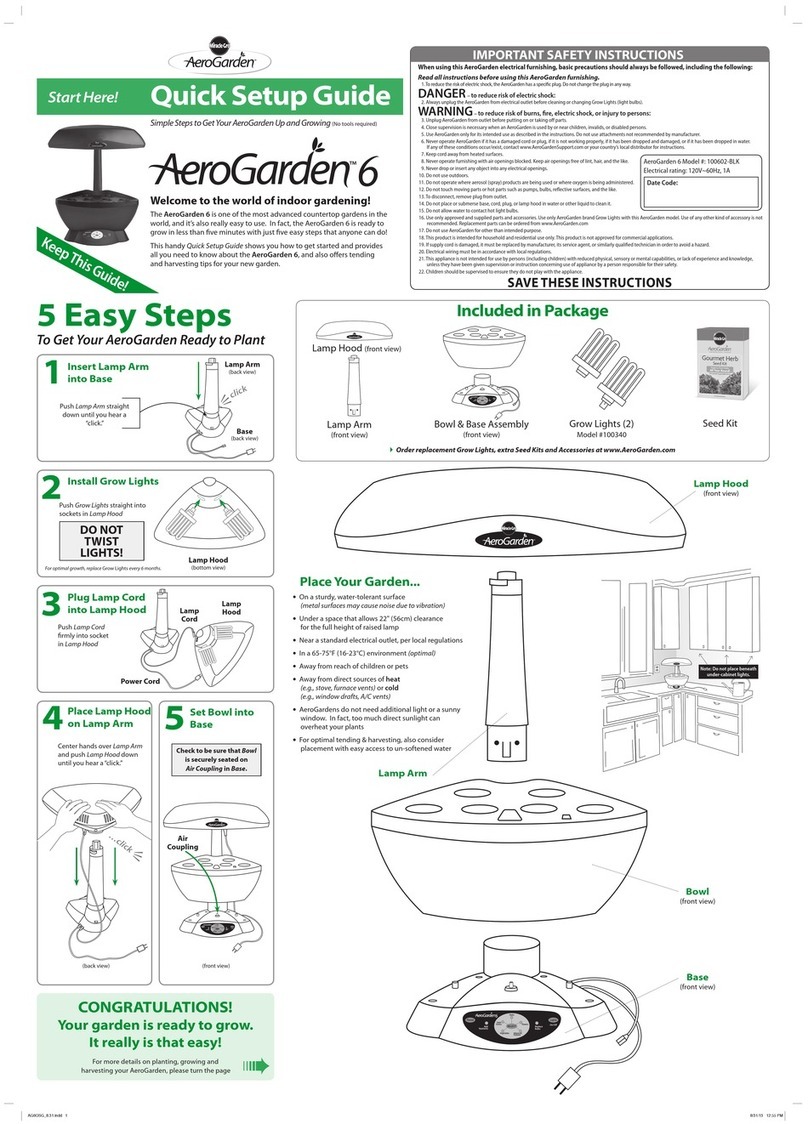
Miracle-Gro
Miracle-Gro AeroGarden 6 Quick setup guide
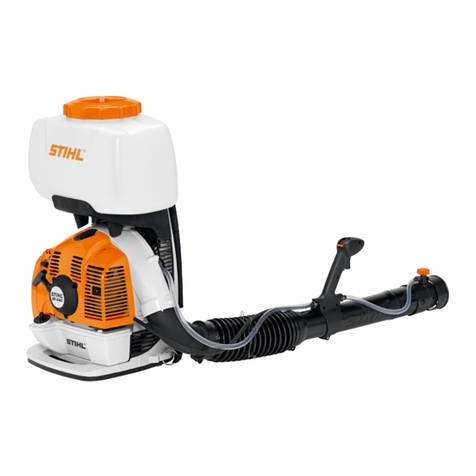
Stihl
Stihl SR 440 instruction manual
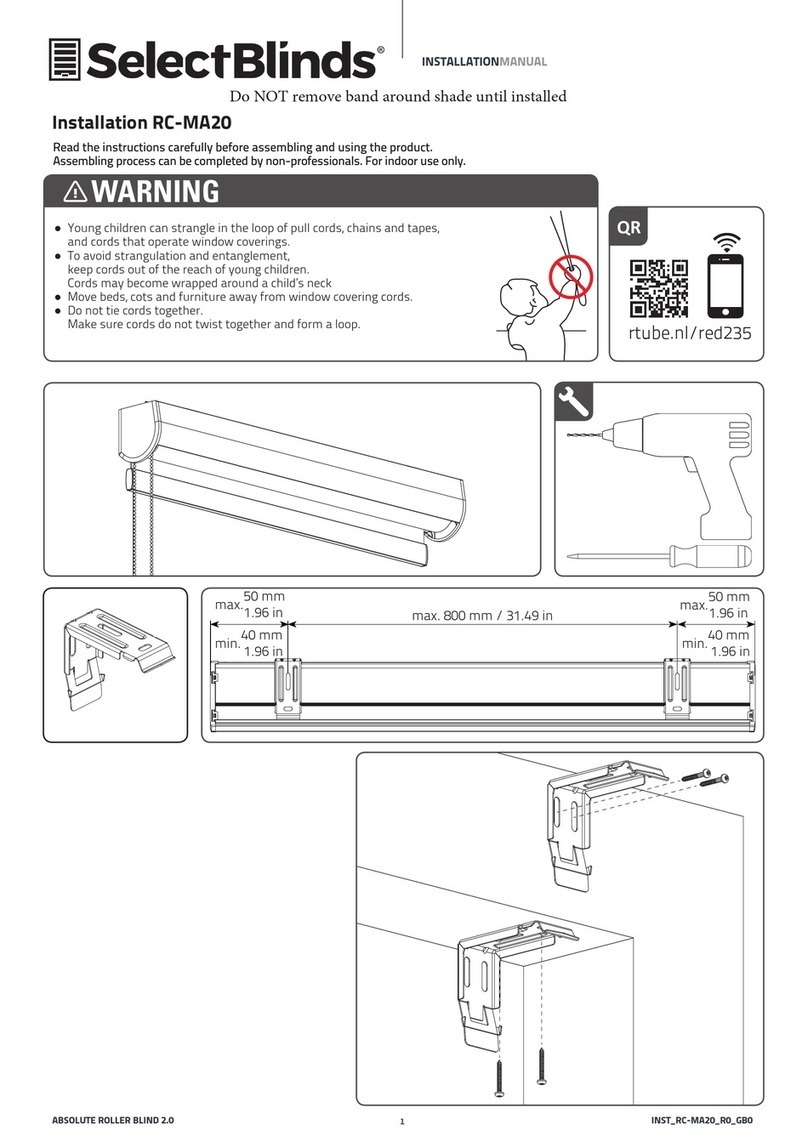
SelectBlinds
SelectBlinds RC-MA20 installation manual
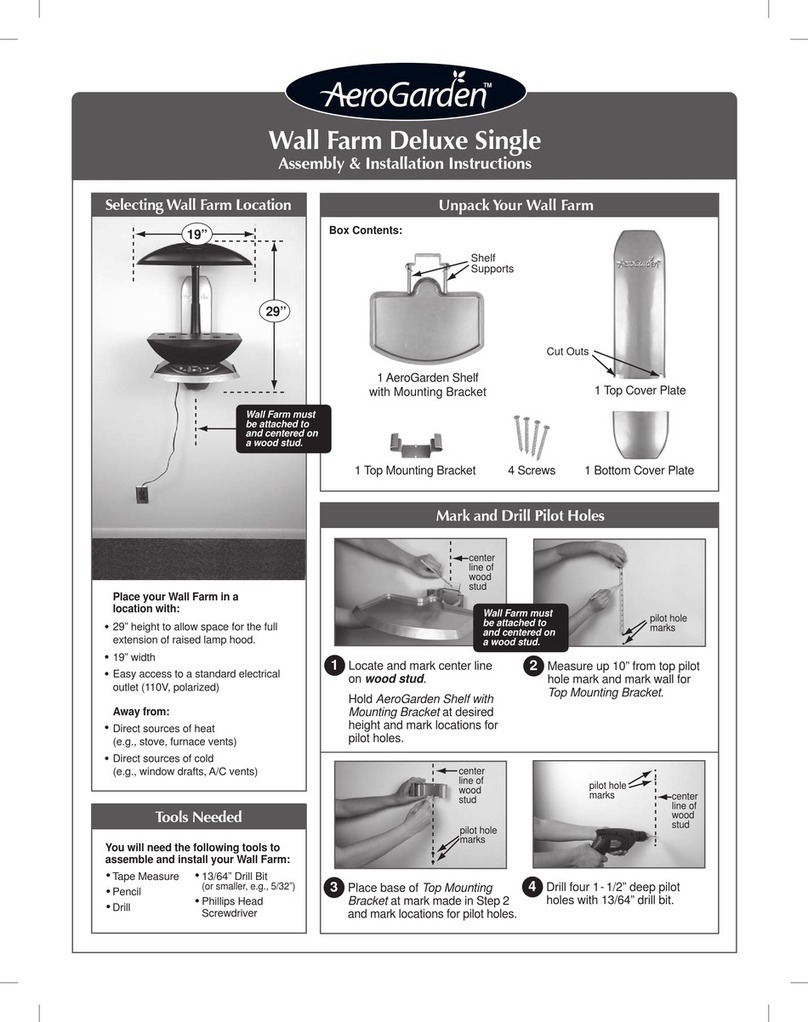
AeroGarden
AeroGarden Wall Farm Deluxe Single Assembly/installation instructions
